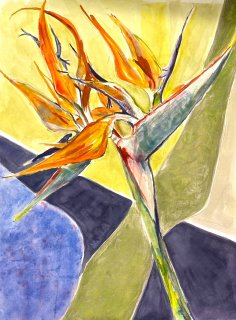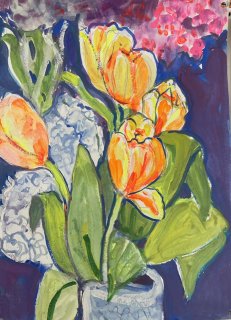
Judy Freeman: " When I speak to student or adults about my experiences, I am often asked, why didn't you fight back? My reply is always: The ultimate form of resistance is having stayed alive. It is an attribute to human spirit that I manage to survive and enjoy a new lifetime that was granted to me. I feel very committed to keeping alive the memory of the six million Jewish men, women, and children, as well as the five million other persons who perished in the Holocaust. I speak on their behalf so they will not be forgotten. I was born in Ungvar in the Carpathian region of Czechoslovakia. which in 1938 became part of Hungary. My father was a baker. and I was assimilated into the local culture. Reading was my passion. and I had many Gentile friends. In 1944 everything changed when Germany marched into Hungary and began the deportation of the Jews. All of the Jews from my city and the entire area were rounded up and put into a ghetto. My family had no idea about the extermination camps. We were deported to Auschwitz and faced Dr. Josef Mengele. who separated me from my mother and twelve-year-old sister. They were sent directly to the gas chambers upon arrival. I was fifteen years old and was sent with the group of young and able-bodied women. I wanted to go with my mother. but one of the prisoners who worked at the arrival platform insisted that I stay in the group to which I was sent. This saved my life. I was assigned to Lager C in Birkenau. Each barrack housed one thousand women. We lived on bare shelves. Eight to ten persons shared each shelf. We had only a dress to wear. The lucky ones got to keep their shoes. I was one of the lucky ones. There were endless days with nothing to do... just starving and roll call. I filled my time by giving book reviews to my fellow prisoners. telling them the stories of the books I had read in the past. To this day, reading is still my passion. Some of the girls developed a vacant stare and lost the ability to think. but I was determined to try to keep my sanity and to stay alive in order to tell the world of the atrocities that mankind can inflict upon innocent human beings. In the fall of 1944, I was selected to be taken to the crematorium. While waiting to be gassed. a sudden air raid interrupted the killings. and I was marched back to my barrack. once again cheating imminent death. In November of that year, I was sent to a slave labor camp near Berlin called Guben. I worked there in an ammunition and electronic factory. The workday was long and the factory far from the campgrounds. but I was grateful that it was indoor labor and not outside in the cold winter.




